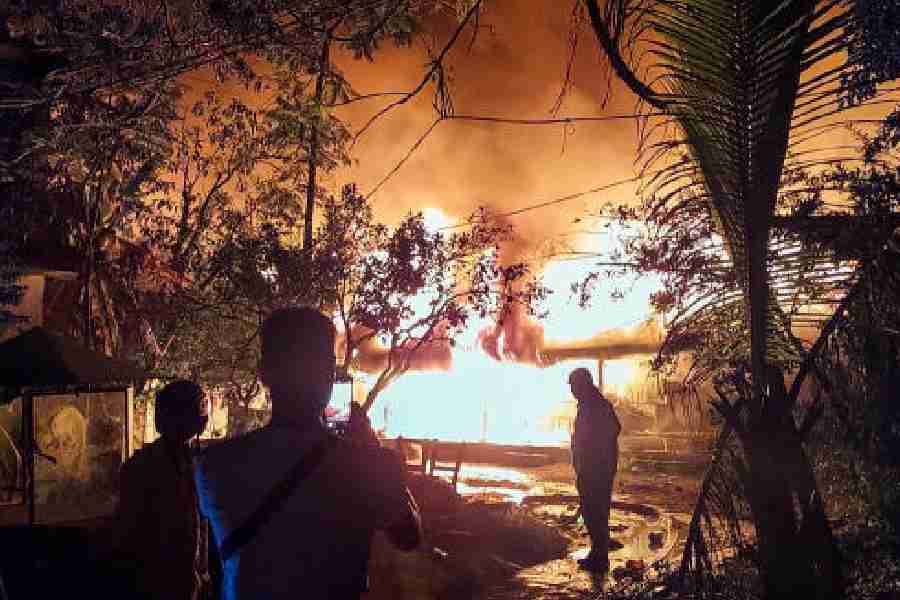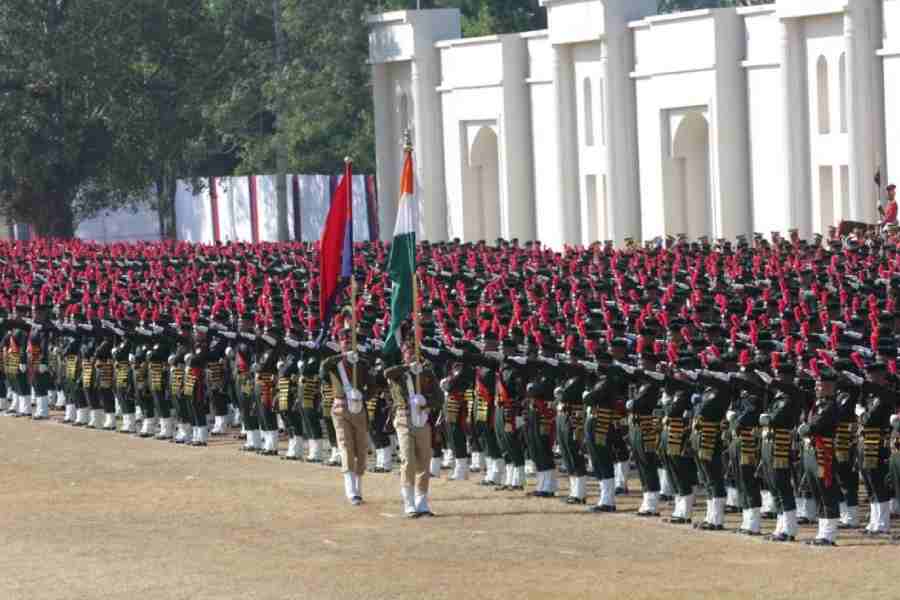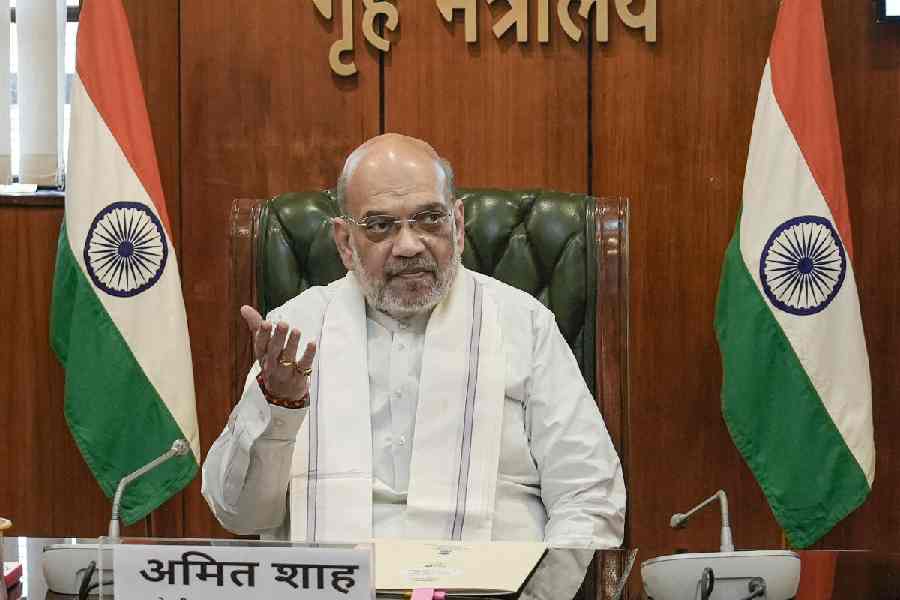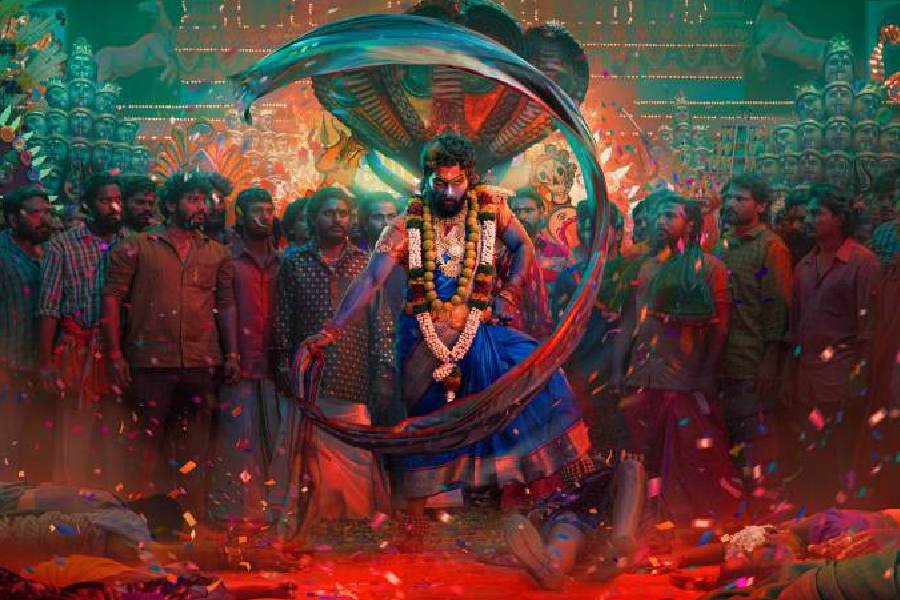The usual axis of conflict in the Northeast, in general, is ethnic rather than religious. It may even be linguistic, for example, the clashes between the Bengali and the Assamese. Usually, religion is a secondary factor here. In Manipur, the Meiteis themselves have a few subgroups. There are the Meitei Muslims called the Pangals, almost 9 per cent of the population. They dominate three Assembly consti-
tuencies. Before they became Hindus, the Meiteis had their traditional faith called Sanamahi, which still survives.
The present conflict in Manipur is one I see as a clash of five natio- nalisms — Meitei, Kuki, Naga, Indian and Burmese or Bamar nationalism. Every group has its own position, identity and army. In Manipur, your primary political identity is in terms of which group you belong to. Right now, the clash is only between the Meiteis and
the Kukis. The Nagas are not actively participating.
The Nagas have been fighting for independence from India since 1947. This struggle has been led by the National Socialist Council of Nagaland or NSCN from 1979-80, which in 1988 split into the NSCN-IM and NSCN-K. NSCN-IM leader Thuingaleng Muivah is from Ukhrul in Manipur. So, Naga nationalism has been an aspect of Manipur politics for quite some years.
There is a reason why this becomes relevant.
The Indian government entered a ceasefire with the NSCN in 1997. In 2001, there were huge protests in Manipur against the extension of the Naga ceasefire into Manipur. The state Assembly was burned down by protestors, who were primarily Meitei. The fear was if the Naga ceasefire was officially extended to Manipur, it would lay the ground for some sort of Balkanisation of Manipur. That was something the Meiteis were vehemently opposed to.
Years later, in July 2010, Mui-vah visited India while the ceasefire was in place. He intended to go to his ancestral home in Manipur, by road from Nagaland. He was stopped at the Nagaland-Manipur border by Manipur state armed forces, again because of fears of the Balkanisation of Manipur. And that has been the pattern.
Today, the Meiteis are still opposed to the same thing.
The ongoing situation may have been triggered by a court order on affirmative action, that is, reservations. Both Nagas and Kukis participated in the march against the inclusion of the Meiteis in the Scheduled Tribe list. But the real issue has always been the Meitei fear of the Balkanisation of Manipur or of loss of their dominance of the state, against the backdrop of the Naga and Kuki demands for autonomy in their areas in the hills. The demand for autonomy is what has been driving Naga and Kuki politics, and the cry for a separate administration has now become the central issue. The range of autonomy demanded can be very broad. Sometimes people want a special provision like an autonomous district council with some powers, sometimes it goes all the way up to an independent country.
Coming to the current conflagration, there are versions and counter versions. It is not safe to blindly believe any version.
However, I find it odd and mysterious that Biren Singh remains the chief minister despite everything that has happened, including the surfacing of that viral video.
Now it has become an issue of nationalistic pride for a lot of Meiteis. Removing Singh is the first item on the agenda of the Kukis, who are demanding President’s rule and a separate administration for themselves. Singh, a Meitei, seems to have managed to use Meitei nationalism to his political advantage. There were many attempts in the past to unseat him, by his own party colleagues including Meiteis. Now he can’t be removed by those Meiteis because he can then project it as a defeat of the Meiteis.
I would like to add that this may be the position of Singh or Meitei nationalists but it cannot be the position of the Government of India, which should do what is constitutionally right.
Action on security was taken by the Government of India right at the beginning. They sent in the army within 48 hours. But political action has not followed military action. The army has been fighting with its hands behind its back, even though the Afspa remains in force in several areas.
Burmese nationalism has its part in the whole situation. The 2021 military coup in Myanmar triggered a civil war, which sent refugees numbering close to 60,000 across the border into India. Almost 50,000 of them went to Mizoram, and only a small fraction — less than 10,000 — came to Manipur. They settled around Churachandpur, which is a Kuki-dominated area.
The refugees are mostly Chins, about 80 per cent of them. Chins are ethnically related to the Kukis. That began to stoke fear among the Meiteis as well as the Nagas that there were a lot of Kukis coming in. Remember, all this is happening in the context of an ongoing NRC in Assam, and the call to “throw out illegal immigrants”.
In early March this year, the Manipur government unilaterally withdrew from a 2008 ceasefire pact called Suspension of Operations with the Kuki National Army and Zomi Revolutionary Army. However, the ceasefire remains between the Indian military and these groups. This is interesting because here is a situation where the Indian government has a different position from the Manipur government. And this was well before the start of the current crisis.
So, it has been snowballing for a while now. The different nationalisms, the civil war in Myanmar, withdrawal of the Manipur government from the trilateral pact... these can be said to be the key factors that preceded the final outburst. There is a danger that the conflict may spread. But for now, the trouble is purely between the Meiteis and the Kukis.
As told to Paromita Kar
Samrat Choudhury’s book Northeast India: A Political History has just been published
by HarperCollins











